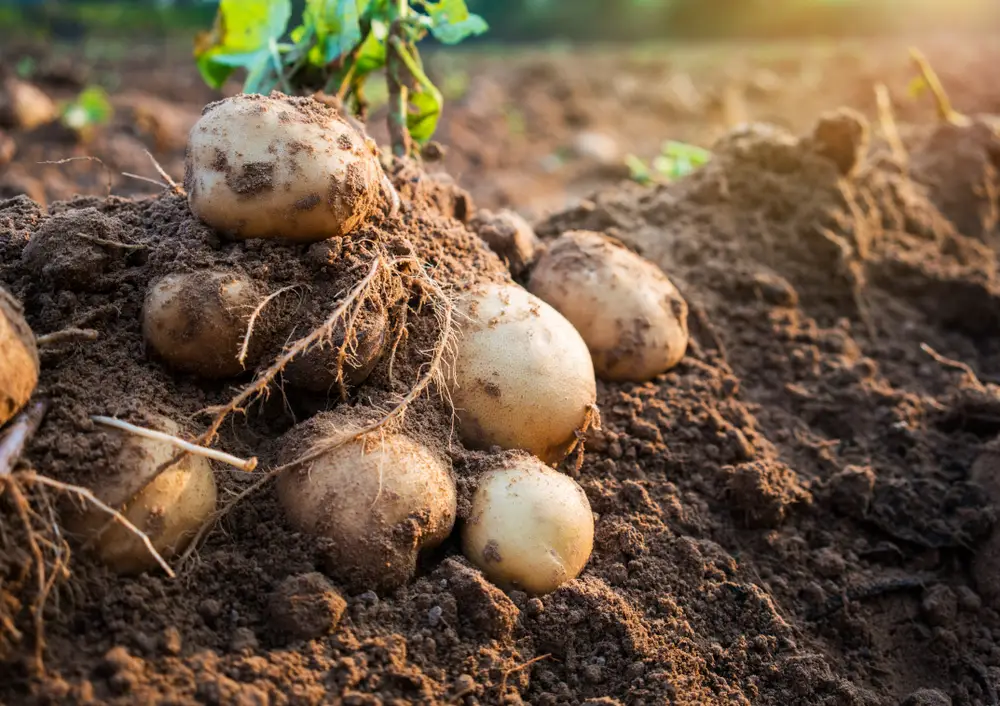The majority of vegetables that grow underground are referred to as root vegetables, with the exception of potatoes, which are considered to be members of the tuber family of vegetables.
Five of the Vegetable families that grow underground are Onions, Cabbage, Carrots, Beetroot, and Potato. These veggies are staples in everyday cooking and full of vitamins and goodness.
Onions, Etc.
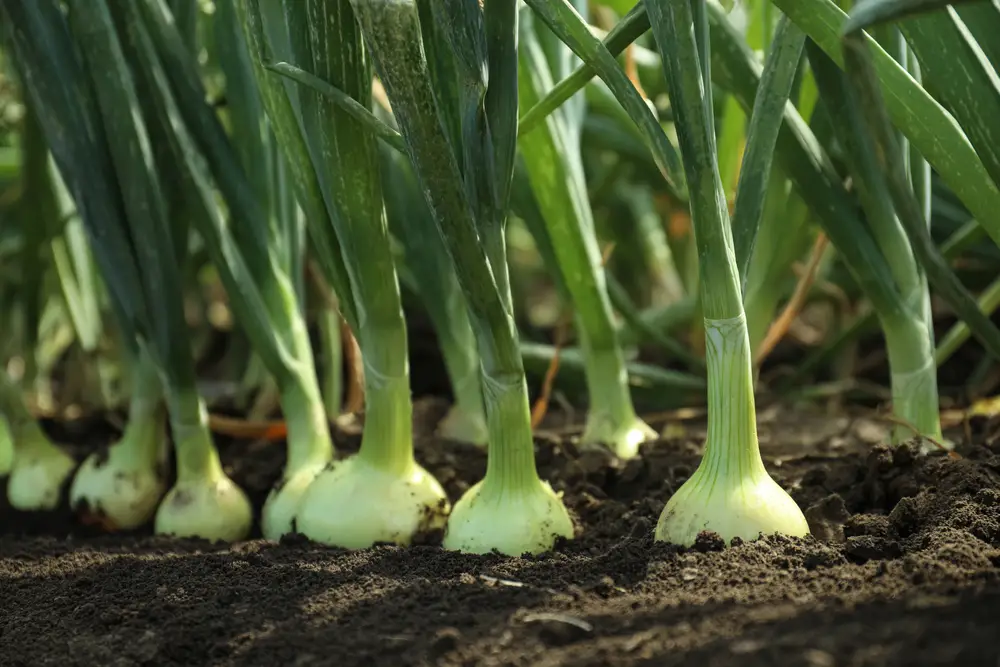
A tasty accompaniment to nearly any savory dish, onions are a must-have in the kitchen. Onions, garlic, and shallots are all members of the onion family.
Onions are the easiest vegetables to grow from seed, which look like oblong mini-onions and are ideal for beginning gardeners.
Gardeners can also grow onions from seeds or transplants to add more variety to their plantings.
Garlic is also a low-maintenance vegetable. In the fall, purchase one head of garlic from a farmer’s market (which will be a variety that is well-suited to your region), divide the head into cloves, and plant the individual cloves.
All members of the onion family are capable of being dried and stored in a cool, dark environment. Onions harvested in the fall can be stored until the end of winter.
Turnips, Etc.
Also included in the cabbage family are turnips and rutabaga, which have been cultivated since the 17th century and are thought to be the offspring of a turnip and a wild cabbage cross.
Because rutabaga takes four weeks longer to mature than a turnip, it is most commonly grown as a fall crop.
Turnips are an essential ingredient in traditional French stews such as pot au feu.
The turnip has been around for thousands of years, having been cultivated since prehistoric times.
This hardy vegetable can withstand more than one frost and, in fact, grows sweeter as a result of exposure to cold. It is recommended to plant turnips as one of the first vegetables to be planted in the spring.
It requires little attention other than regular watering to ensure that it germinates and grows successfully.
Carrots, Etc.
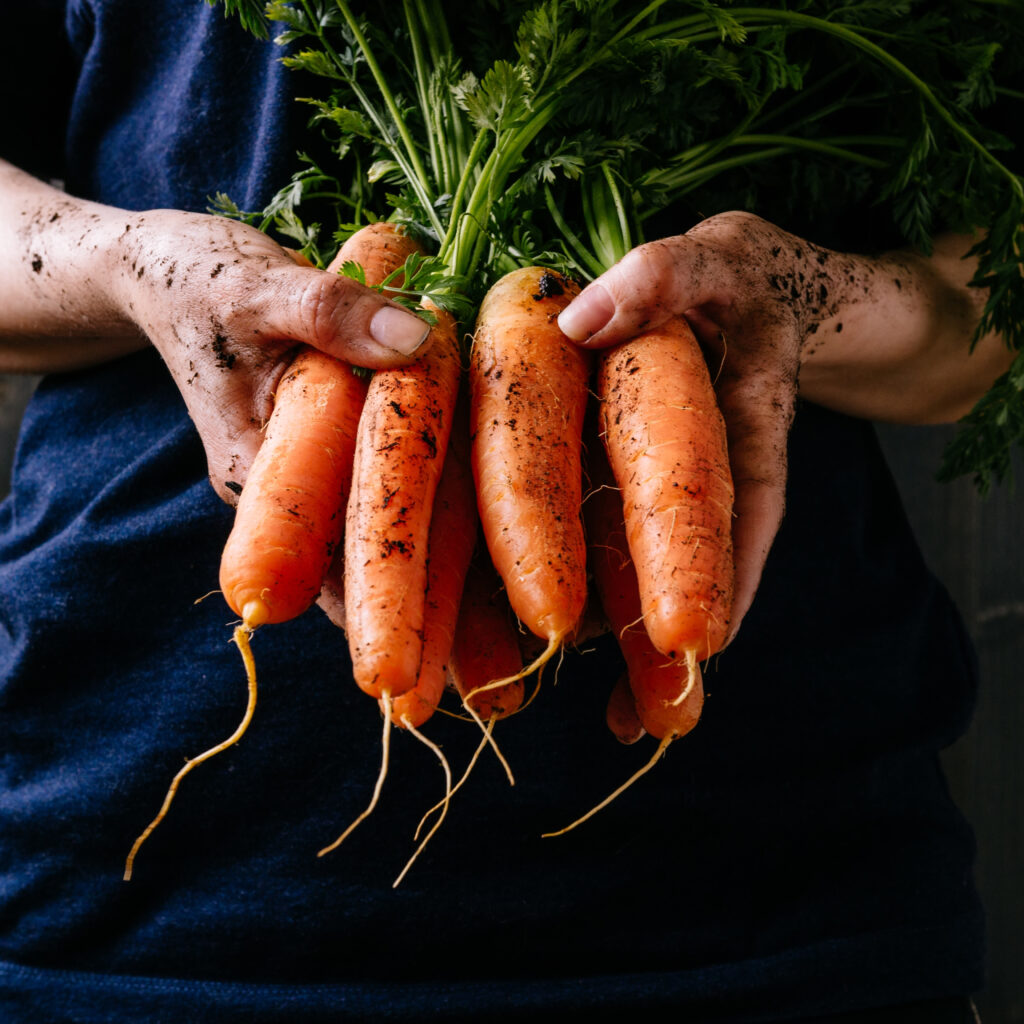
Carrots, which are sweet and crunchy, are an excellent, nutritious substitute for unhealthy snacks. The carrot family includes root vegetables such as carrots, parsnips, and celeriac.
Carrots require loosened soil in order for their long roots to be able to develop fully. Carrot seedlings are delicate, and their beds must be weeded with care to avoid damaging them.
Heirloom tomatoes typically reach maturity in two months and can be harvested as late as the first hard frost occurs.
Parsnips not only withstand frosts but they can also be left in the ground over the winter to be harvested in the spring when the weather warms up.
Cold temperatures cause their starches to be converted to sugars, resulting in a sweeter and more filling flavor.
Celeriac is the uglier cousin of the carrot and parsnip in terms of appearance. As a tough-skinned bulbous root, it thrives in rich and moist conditions; therefore, mulching is highly recommended.
Beetroots, Etc.
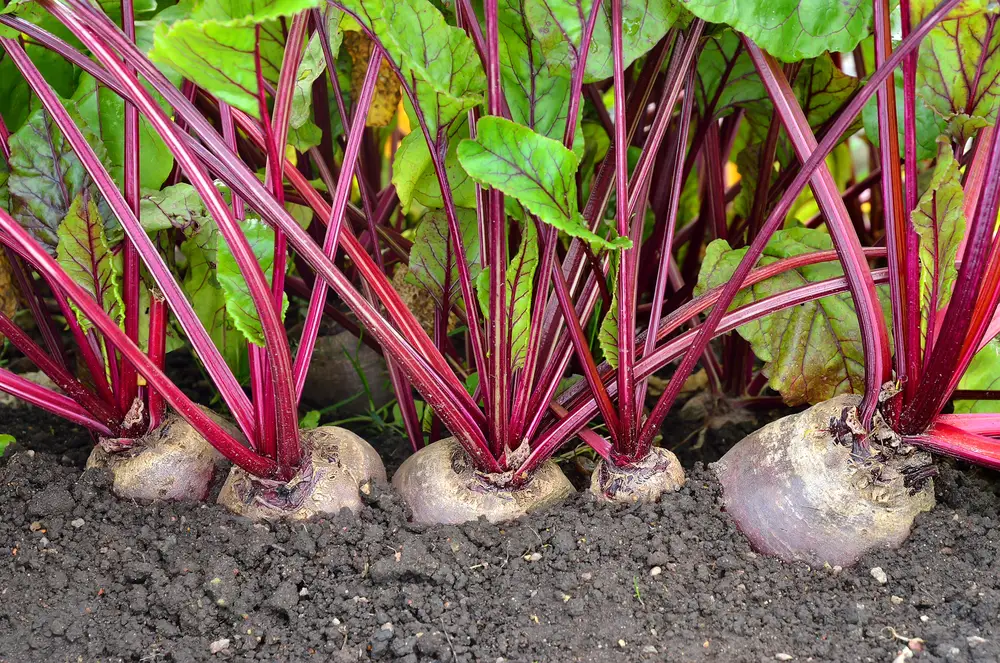
Beet greens, like other vegetable greens, are not only edible, but they are also delicious. One of the most visually appealing root vegetables, the beetroot comes in a variety of hues to complement any dish.
The typical garden beet is a dark red color, while the golden beet is a deep yellow-orange color, and the heirloom Chioggia, when sliced crosswise, displays concentric circles of red and white color on the surface.
Beets can be grown in successive plantings to ensure a steady supply.
Later plantings will necessitate regular watering or irrigation due to their preference for moist soil conditions. They also prefer soils that are high in potassium.
Beets can be harvested at any size and, like the carrot family, must be stored at low temperatures with high moisture content, such as in the refrigerator, to maintain their nutritional value.
Potatoes, Etc.
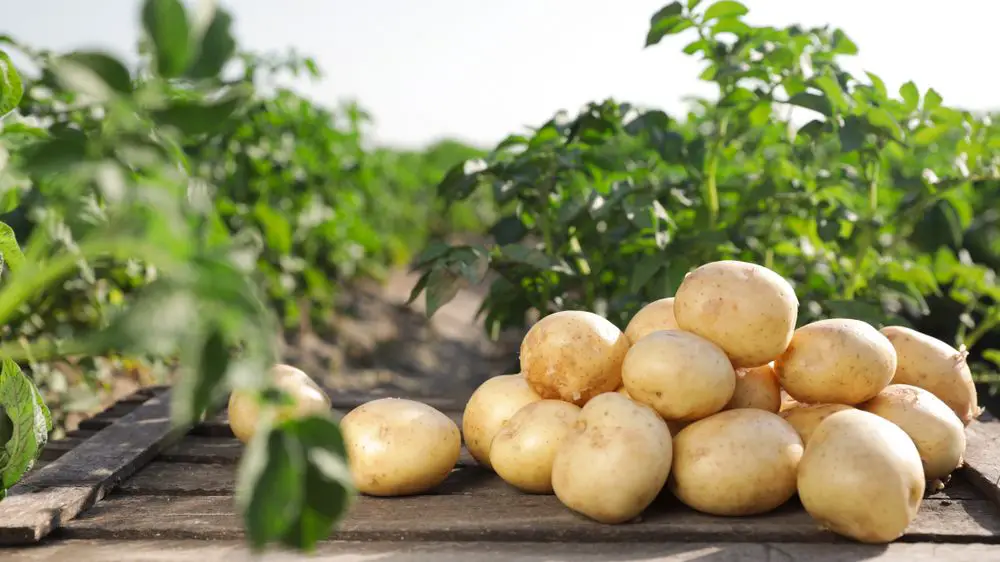
Potatoes should be stored in a dark, cool place away from direct sunlight, but not in the refrigerator, where the cold temperatures will produce an unnaturally sweet taste.
Potatoes are available in a variety of colors, including red, yellow, and blue, among others.
Contrary to popular belief, they are actually stem tubers, which serve to store the plant’s energy and are therefore not considered vegetables.
Potatoes grow best in cooler climates, though some varieties have been bred to thrive in hotter climates as well.
Farmers should purchase disease-free seed potatoes rather than keeping their own potatoes to reseed, according to the National Seed Savers Association.
Hoeing can help break up the soil, reduce weeds, and create a mound of soil over the potatoes to protect them from being exposed to the sun, which can cause green skin and the accumulation of a mild toxin called solanine in the tubers.
Not All Root Vegetables Are True Roots
It is possible to distinguish between true roots and non-roots from a botanical standpoint. Some of the vegetables we classify as “root vegetables” are modified stems, such as corms and rhizomes, which are classified as root vegetables. For example, taro is a corm, whereas ginger, turmeric, and galangal are all rhizomes of plants.
Then there are the tubers to consider.
Yams and potatoes are both considered tubers. When you eat something, it’s actually a storage organ for carbohydrates, which allows the plant to store nutrients so that it can survive through the dry season (or winter in colder climates) and regrow when the weather turns warm again.
True Roots Vegetables
True root vegetables are either taproots or root tubers, depending on their shape. Taproots are distinguished by the presence of a large dominant root from which other roots sprout. Examples include carrots, radishes, sugar beets, parsnips, and turnips.
While the edible portion of corms and rhizomes consists of a modified stem, the edible portion of root tubers is composed of a modified root.
As with true tubers, the edible portion of the root tuber also serves as a carbohydrate storage facility.
Sweet potato and cassava are two such examples.
The Process of Preparing Root Vegetables for Cooking
If you don’t intend to give your family a botany lesson every time you serve root vegetables, the distinction between true roots and non-roots isn’t that important in the long run.
It is sufficient to say that they are all root vegetables because the part of the plant that we eat grows in the soil rather than on the surface of the ground.
As a result, when they are freshly harvested, there is still some soil clinging to them. To remove soil from root vegetables, turn on the faucet and run the vegetable under running water for a few seconds.
To loosen soil that has become hardened, use a soft brush.
Underground Veggies
Since they grow underground, most root vegetables are considered extremely healthy, as they are able to absorb many essential vitamins and nutrients from the soil.
In addition, they are primarily composed of complex carbohydrates and fiber, which aids in the regulation of hunger, metabolism, blood sugar, and the digestive system in general.
Root vegetables, despite the fact that they are low in calories, are known to make a person feel full, which is why they are highly recommended for people who are trying to lose weight.
Many root vegetables can be grown all year round, but the majority of them are at their best during the autumn and winter months, according to the USDA.
There is one exception to this rule: red beets, which are at their juiciest and most flavorful when picked in the summer.
It is possible to prepare root vegetables in a variety of ways; for example, they can be eaten raw in salads, roasted in an oven or on the stovetop, or cooked in soups, sauces, or slow cookers.
Final Thoughts Vegetables that Grow Under the Ground
In the average daily intake for humans, at least one off these underground veggies are eaten almost every day – probably several.
They bring health, they are cheap and easy to cook, and have an extensive variety of recipes in which to use them.
How lucky are we, that we can just plant these nourishing veggies in the earth and grow them for good healthy meals through the year!
Jenny Marie
Tribal Writer
Edited By
Patricia Godwin

